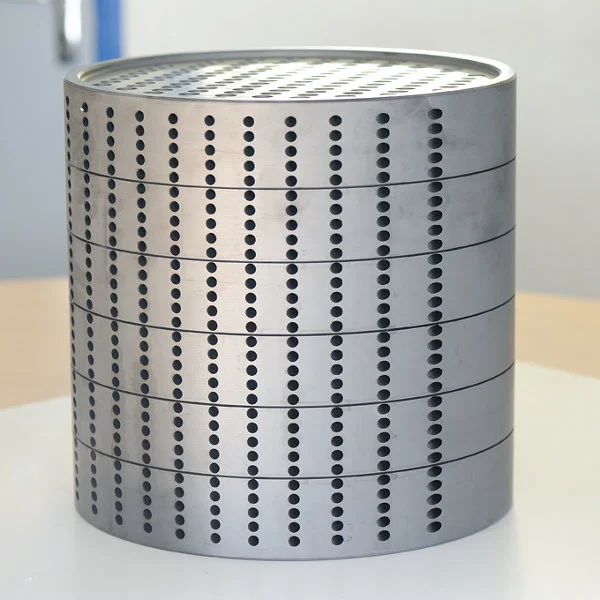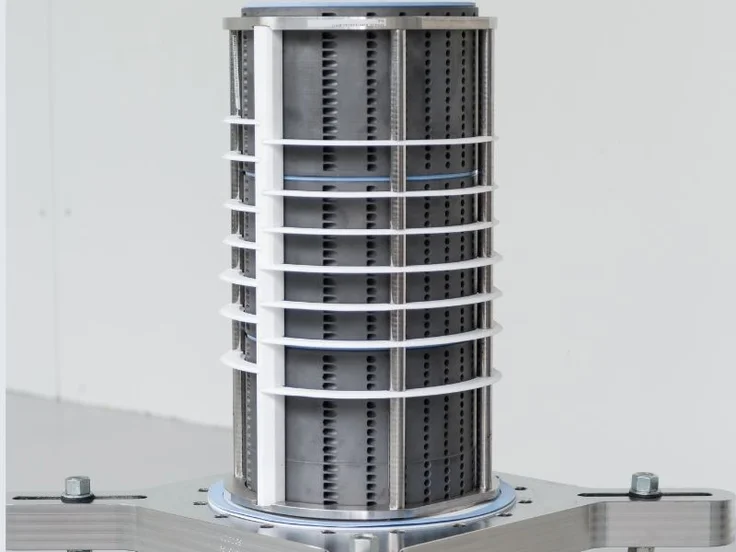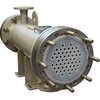Silicon carbide block heat exchangers
Brochures
pdf - 6 MB
-
Conception
Rows of holes are drilled through the silicon carbide blocks both horizontally and vertically to form the process and service channels. Heat is transferred by conduction through the silicon carbide left between the rows of holes which separate the mediums being used. SiC block heat exchangers consist in a stack of blocks encapsulated in a steel shell.
-
Silicon carbide block heat exchangers features
- Totally modular design: number of blocks, size of blocks and number of passes can be adjusted
- Different drilling diameters on process and service sides
- Different block diameters: 160, 260 and 350 mm
- Silicon carbide, PTFE lined steel or glass lined steel headers on product side
- Thermal expansion compensation ensured by stainless steel expansion bellow on the shell
- Design pressure: -1 barg (full vacuum) to +16 barg (230 psig)
- Design temperature: -60 to +220°C (-76 to 428°F)
- Heat transfer area: up to 22 m2 (238 ft2)
Option
- Removable headers for easy mechanical cleaning
- Sight glass
-

-
Silicon carbide block heat exchangers benefits
- Outstanding corrosion resistance against acid, bases and oxidizing media
- Good heat transfer performance thanks to adjustable cross sections on both sides
- Easy disassembly
- Ability to mechanically clean each block
- Second hardest material existing on earth thus eliminating any risk of erosion
- High operational safety
- Compact, sturdy and modular design
- Short lead time
- Long lifetime
-
Silicon carbide block heat exchangers applications
- Cooling, condensation, heating, evaporation and absorption of ultra-corrosive and/or oxidizing chemicals or ultra-pure chemicals.
- Suited for multi-purpose or single purpose units
-
Product Literature
Brochures and Flyers
Feb. 3, 2025
Heat exchangerspdf - 6 MB


